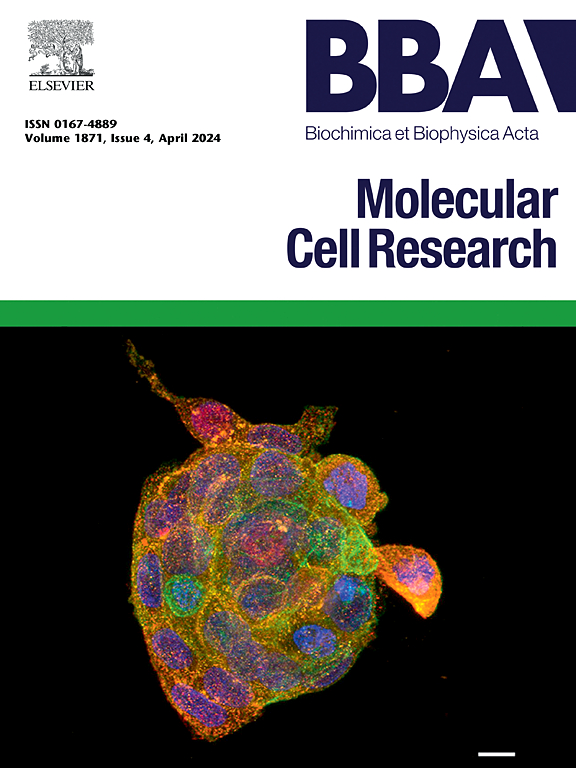心脏内禀神经元中的离子通道表达:心脏通道病变的新参与者?
IF 3.7
2区 生物学
Q1 BIOCHEMISTRY & MOLECULAR BIOLOGY
Biochimica et biophysica acta. Molecular cell research
Pub Date : 2025-05-08
DOI:10.1016/j.bbamcr.2025.119983
引用次数: 0
摘要
通过改变交感神经和副交感神经张力之间的平衡,自主神经系统是心脏病理中观察到的电障碍的重要调节剂。心脏神经元自主神经控制的最后一个共同途径位于心脏内神经系统(ICNS),由心内神经元(ICN)组成,并允许交感-副交感传出神经元在心内部位相互作用。ICNS是一个复杂的系统,在心脏生理参数的调节中起着至关重要的作用,并已被证明与心脏疾病,特别是心律失常有关。因此,了解控制ICNS兴奋性的分子决定因素(如离子通道)及其在病理条件下的潜在调节是至关重要的。本文讨论了ICN表达的几种离子通道,包括钾通道(如内向整流、钙依赖、电压激活、毒碱敏感)、电压门控钠通道(VGSC)、电压门控钙通道(VGCC)、超极化激活的环核苷酸门控(HCN)通道和瞬态受体电位(TRP)通道,以及它们在心脏病理中的潜在作用。我们强调需要进一步研究ICN离子通道,特别是在病理条件下,以开发心律失常的治疗方法。本文章由计算机程序翻译,如有差异,请以英文原文为准。
Ion channel expression in intrinsic cardiac neurons: new players in cardiac channelopathies?
The autonomic nervous system is an important modulator of electrical disorders observed in cardiac pathologies through changes in the balance between sympathetic and parasympathetic tone. The final common pathway for cardiac neuronal autonomic control resides in the intrinsic cardiac nervous system (ICNS), composed of intracardiac neurons (ICN), and which allows sympathetic-parasympathetic efferent neuronal interactions at intracardiac sites. The ICNS is a complex system that plays a crucial role in the regulation of cardiac physiological parameters and has been shown to contribute to cardiac diseases, in particular cardiac arrhythmias. It is therefore crucial to understand the molecular determinants, such as ion channels, that control the excitability of the ICNS and their potential modulation in pathological conditions.
This review discusses several ion channels expressed by ICN, including potassium channels (e.g., inward rectifier, calcium-dependent, voltage-activated, muscarinic-sensitive), voltage-gated sodium channels (VGSC), voltage-gated calcium channels (VGCC), hyperpolarization-activated cyclic nucleotide–gated (HCN) channels and Transient Receptor Potential (TRP) Channels, and their potential involvement in cardiac pathologies. We highlight the need for further research on ICN ion channels, particularly under pathological conditions, to develop therapies for cardiac arrhythmias.
求助全文
通过发布文献求助,成功后即可免费获取论文全文。
去求助
来源期刊
CiteScore
10.00
自引率
2.00%
发文量
151
审稿时长
44 days
期刊介绍:
BBA Molecular Cell Research focuses on understanding the mechanisms of cellular processes at the molecular level. These include aspects of cellular signaling, signal transduction, cell cycle, apoptosis, intracellular trafficking, secretory and endocytic pathways, biogenesis of cell organelles, cytoskeletal structures, cellular interactions, cell/tissue differentiation and cellular enzymology. Also included are studies at the interface between Cell Biology and Biophysics which apply for example novel imaging methods for characterizing cellular processes.

 求助内容:
求助内容: 应助结果提醒方式:
应助结果提醒方式:


